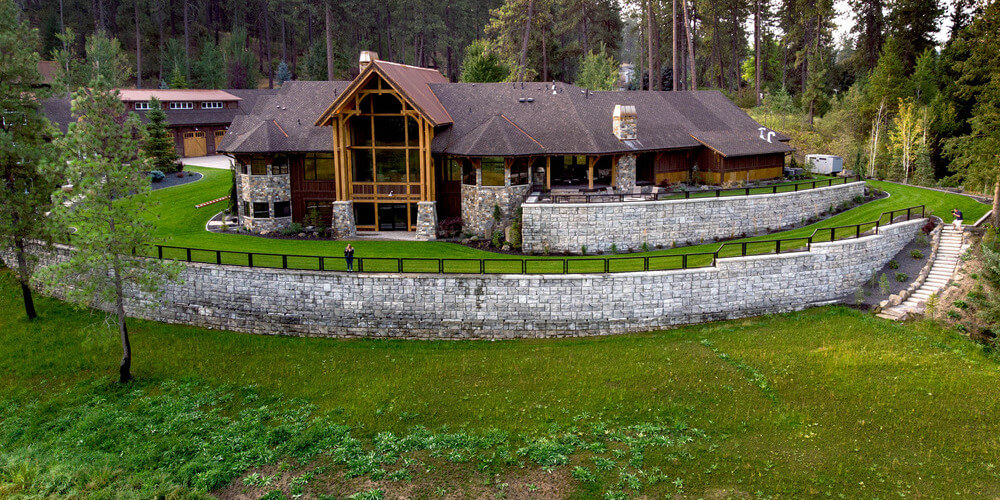Five Steps to Get a Redi-Rock Wall for Your Home
Avg. Read Time: 2 min, 55 sec
The Base Course
Short on time? Here are this article’s key takeaways…
Define your wall’s purpose and location. Know what your wall needs to do and where it’ll be installed to guide your decisions.
Review local regulations. Check for zoning rules, HOA guidelines, and permit requirements that could affect your project.
Talk to your Redi-Rock producer. They’ll help assess feasibility, recommend products, connect you with engineers, and provide pricing info.
Work with a local engineer and installer. An engineer ensures your wall is designed to meet code and perform long-term, especially for taller or load-bearing walls.
You want a retaining wall that works—and looks great—but figuring out where to start can feel overwhelming. You don’t have to figure it out alone. The Redi-Rock system was designed with simplicity at its core. With just five clear steps, you can confidently plan and build a retaining wall that enhances your home and solves your biggest slope or space challenges.
1. Determine the Wall’s Purpose and Position
The type of retaining wall you purchase for your home will depend on what you need it to do and where it will be located.
- Are you creating more level yard space or adding tiers to your landscaping?
- Are you supporting a driveway, parking area, or a structure like a shed or swimming pool?
- Are you guarding against erosion caused by wind or water?
- Are you creating access to a waterfront area?
You should also identify where your wall will be located. This will help determine the type of retaining wall you’ll need.
- Will the wall be near your property line or buried utilities like gas, power, communications, or water?
- Will you install the wall in wet conditions along a shoreline or creek bed?
- Will your wall be installed in front of an existing failed retaining wall?
Don’t worry about being too specific when answering these questions. A general idea of your wall’s purpose and location is sufficient. Wall experts will help you work out the details.
2. Check Local Regulations
Be sure to familiarize yourself with local rules that may govern your retaining wall project. These include:
- Planning and zoning codes and regulations
- Homeowners association rules
- Permit and inspection requirements
These rules and regulations frequently govern the placement, composition, and appearance of features like retaining walls, so at least a basic awareness of them helps ensure a successful project.
3. Contact Your Redi-Rock Producer
After deciding on your wall’s purpose(s) and location and gaining a basic understanding of local regulations, it’s time to engage a retaining wall professional – your local Redi-Rock manufacturer. Redi-Rock producers can answer any questions and help iron out most anything you remain unsure about. When you contact your Redi-Rock producer, expect them to assist with several important items like:
- Initial feasibility guidance. Is your wall project doable and a good fit for Redi-Rock?
- Product recommendations. Which Redi-Rock solution will work best for your project?
- Engineer and installer referrals. Who should you contact to handle your wall's specific design and construction?
- Materials pricing projections. How much should you expect to spend on your wall materials?
- Next steps. What should you plan on doing next for your project?
Now is a great time to explore the natural textures and regional colors available for your wall or the Redi-Rock wall solutions designed for residential use, from gravity walls to freestanding.

4. Consult Your Local Engineer/Wall Designer and Installation Partners
Involving an engineer/wall designer in your wall project is never a bad idea. Retaining wall installations are governed by the International Building Code, which stipulates that engineering designs are required for walls 48 in (1219 mm) or taller that retain soil and 24 in (609 mm) or taller that support lateral loads like vehicular traffic or structures. Your Redi-Rock producer can often recommend a reputable civil engineer versed in local soil conditions who has experience designing with Redi-Rock.
Your Redi-Rock producer can almost certainly recommend experienced contractors to ensure you get the wall you need. It may be helpful to meet with several prospective contractors before choosing one. Review their project portfolios and request references so you find the right fit.
5. Finalize Your Budget and Plan the Installation
Having connected with your Redi-Rock producer and selected a wall designer and installer, you should have every resource needed to finalize your budget and establish an installation timeframe. For a better idea of the costs of a Redi-Rock wall, check out our helpful guide: What Does it Cost to Get a Redi-Rock Wall?
You don’t have to be an expert to make a smart choice for your yard. By following these five steps—and partnering with your local Redi-Rock team—you’ve already taken the most important action: educating yourself. With the right team and the right system, you can feel confident installing a retaining wall that does the job, is built to last, and looks great in your space.
